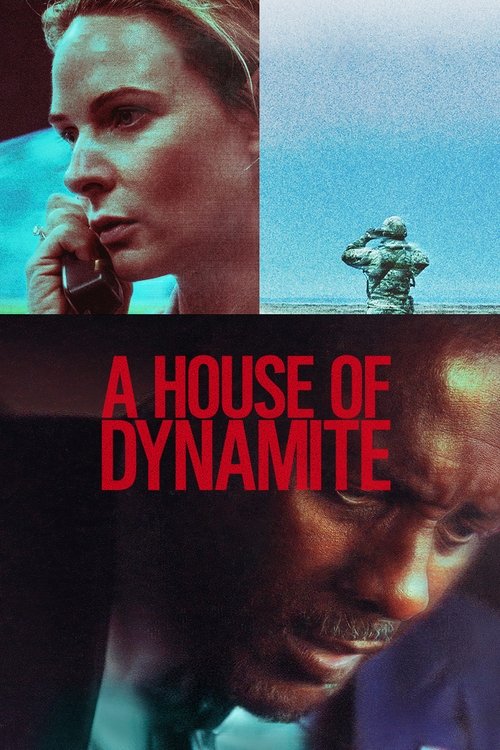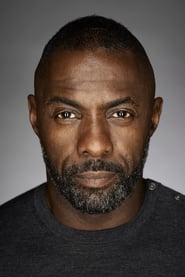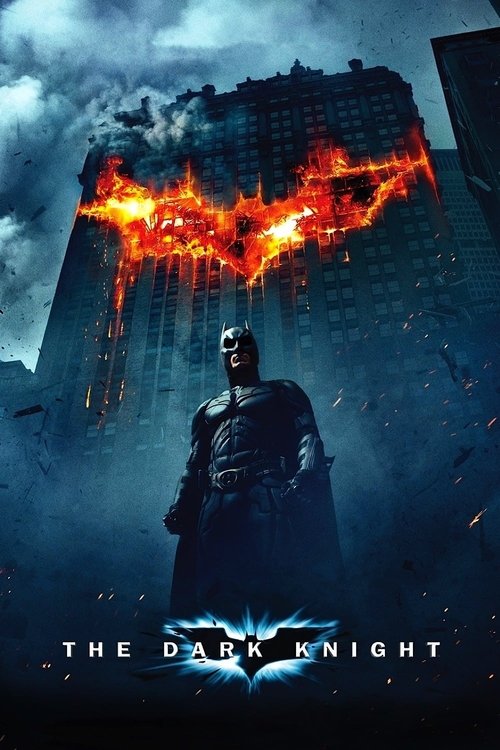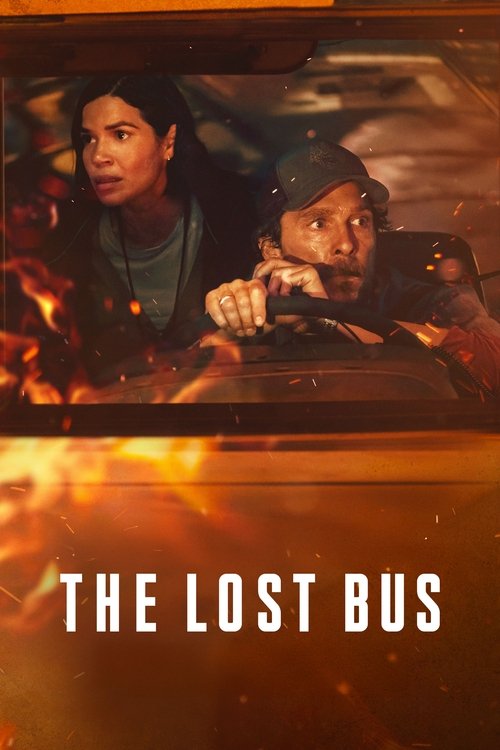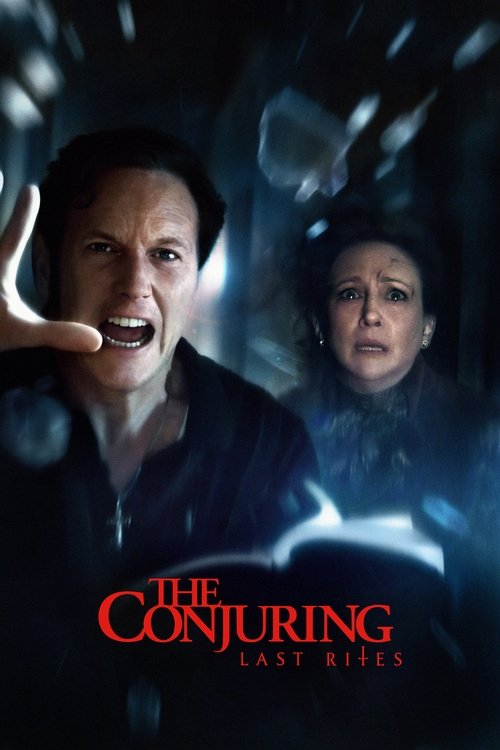
Ask Your Own Question
What is the plot?
Patrizia arrives at the turning point of her marriage trying to draw Maurizio back to her; she brings their children to plead with him at home and in public, she stages encounters meant to remind him of their life together. Maurizio, however, is emotionally and romantically involved with another woman, Paola, and he rejects Patrizia's appeals. He serves her with divorce papers. Infuriated by the end of her privileged status as a Gucci wife and alarmed at the threat to her influence over the family business, Patrizia confides in her close friend Pina. Pina fans her rage and together they move from bitter conversation to conspiratorial planning. Patrizia seeks out Sicilian hitmen and hires them to eliminate Maurizio; she signs the checks and gives them instructions, arranging payment through intermediaries. The hitmen accept the job.
Maurizio, for his part, attempts to remake the company and its public face in response to years of feuding and mismanagement. He elevates his assistant Domenico De Sole to visible managerial responsibility and places a young designer, Tom Ford, at the forefront of the creative arm, publicly promoting them to carry the Gucci brand into a new era. Those appointments, however, do not stabilize the family's position inside the business. Investcorp, frustrated by Maurizio's direction and eager to professionalize the company, decides to buy him out. The investment group purchases control from him, strips him of operational authority and installs De Sole and Ford as the leaders of Gucci's business and design respectively.
In March 1995, Maurizio walks toward his residence alone. He moves through a courtyard and proceeds along the street toward the gates, pausing to adjust his coat. The hired Sicilian killers spot him from a vehicle. They abandon any pretense; they sprint after him, calling to each other as they close the distance. They draw handguns, chase Maurizio down the block and fire at him at close range. Bullets strike his chest and back; he collapses onto the pavement and bleeds out. The hitmen drive away immediately after the shooting, leaving Maurizio's body where it falls.
When news of the assassination reaches Patrizia, she opens her diary and writes the word PARADEISOS in block letters. For a brief, ecstatic moment she believes the elimination of Maurizio will restore her to full control of the Gucci name and to the privileges she has lost; she smiles and tells Pina the murder secures her future. Her exultation dissolves within a short period as the Italian police and prosecutors begin investigating links between the murder and the family circle. Detectives track payment trails and interrogate intermediaries. Italian authorities identify the Sicilian killers and, following forensic leads and phone records, link them back to Patrizia and to Pina's facilitation.
Police arrest Patrizia and Pina along with the two hired hitmen. Prosecutors charge Patrizia as the instigator of Maurizio's murder and bring both women to trial. The courtroom proceedings unfold through testimony about the payments, about Patrizia's prior threats, and about the events of the day Maurizio dies. The two Sicilian gunmen admit their involvement in exchange for leniency on certain points and testify that Patrizia commissioned the killing. The judge convicts Patrizia of orchestrating the assassination and sentences her to twenty-nine years in prison; Pina and the gunmen receive long terms as well. Subsequent legal petitioning, appeals and an adjustment for good behavior reduce Patrizia's time served; after serving eighteen years she is released from custody. Aldo Gucci and Paolo Gucci--older members of the family who once fought to control the business--lose their wealth amid legal fees and business upheaval; the court records and media reports state that Aldo and Paolo die destitute. The company itself remains outside the family's control: Investcorp continues to operate Gucci as a successful luxury brand and later sells it to a French consortium that becomes the brand's corporate parent. No member of the Gucci family remains in any operational role at the company after these transactions and convictions are finalized.
At a military installation in Alaska, an entirely different crisis begins to unfold. Major Daniel Gonzalez and the crew on duty examine a radar return that has no declared origin. The instruments show an intercontinental ballistic missile in flight over national airspace; the launch did not appear on alerts fed into the early-warning systems. Initially Major Gonzalez and his technicians log the contact as a possible test launch and request confirmation. When telemetry and trajectory analysis continue to point to a real warhead on a ballistic course toward the continental United States, they change course: Gonzalez radios the command chain and scrambles anti-ballistic missile defenses. He orders interceptor batteries to fire and directs his crew to calculate intercept vectors, but the incoming missile's speed and altitude complicate their response.
In Washington, D.C., Captain Olivia Walker sits at the National Security monitoring console in the White House and watches viral feeds and alert tones cascade across the screens. Her unit receives notification of the unknown ICBM launch and immediately begins triage procedures. Walker joins a secure video conference that includes the President, the National Security Council and several regional commanders. As analysts calculate a projected impact point, Walker reports a grim update: the missile will reach the Chicago metropolitan area in roughly eighteen minutes. She states the estimate aloud. On the call, the President hears the countdown and orders all relevant agencies to prepare for mass-casualty contingency. Walker fields pleas and panicked questions from subordinates while simultaneously patching calls from foreign capitals into the secure line.
Major Gonzalez's interceptors launch, rising from their silos and arcing toward the incoming warhead. The missiles scream upward and exhaust plumes flare across the Alaskan sky. The interceptors close on the ICBM, but they fail to acquire a lock; their kinetic kill vehicles miss the incoming vehicle's bus stage. Radar operators watch the interceptor volleys dissolve in miss distances, and the data scrollers update to show that the defensive measures have not stopped the trajectory. Gonzalez slams the console and orders a second volley, but command notes that they are on the clock and resources are limited.
On the secure feed, Deputy National Security Advisor Jake Baerington speaks calmly and insists that the United States avoid immediate retaliatory action until analysts can identify the attacker. He warns that a hasty counterstrike risks escalation and could provoke allied states into broader conflict. General Anthony Brody, watching from another joint facility, disagrees fiercely. Brody declares the only sensible option is to retaliate quickly and decisively in order to deter further attacks; he pushes the President to authorize a counterstrike that would target enemy launch facilities. Brody's voice rises as he sketches operational options, and he emphasizes the need for a strong military response.
Baerington triggers a consultation with the National Security Agency's specialists. He asks for the North Korea desk's expertise and they patch in Ana Park, a Korea analyst at the NSA. Park examines flight profiles and telemetry and reports that it is technically possible that North Korea launched a missile with sufficient range and reentry capability to strike Chicago. Her assessment lacks absolute certainty, but she warns that the launch profile and signatures are consistent with North Korean capabilities. Baerington stresses that certainty must precede retaliation.
The call fragments into multiple secure channels. Admiral Mark Miller escorts Baerington to a lower bunker location to protect him from any potential attack on Washington. While underground, Miller coordinates communications with the U.S. State Department and manages diplomatic contact with foreign officials. Miller establishes a secure line to the Russian foreign minister, who answers tersely and denies any Russian involvement. The Russian official warns that should the United States strike Russian assets in response, Russia will retaliate against American submarines and possibly escalate to kinetic measures. The foreign minister's reply is blunt and offers no assistance in identifying the attacker. Miller relays the message to Baerington and the President's staff.
Meanwhile, FEMA official Cathy Rogers is in the process of overseeing civilian emergency measures when security officers inform her that she must move to a government bunker. Men in suits and protective gear shepherd Rogers into an underground facility designed for continuity of government operations. Some of Rogers's colleagues object and yell that they are leaving staff behind; others push back at her priority access. Rogers, escorted into the bunker, checks manifests and begins cataloguing officials who are under shelter. She relays requests for information to Walker and Baerington via secure lines.
At the White House, Secretary of Defense Reid Baker learns that Chicago is the projected impact site and that his estranged daughter Caroline lives in that city. He scrambles to get her evacuated. Baker places frantic calls to FEMA and his contacts in Chicago, but the time window is too short to ensure her removal from the area. He attempts to contact Caroline directly; she does not answer the phone. Driven by panic and the personal impossibility of securing evacuation for a loved one, Baker walks up onto the roof of the White House and, faced with the enormity of the impending casualties, takes his own life. He throws himself from the ledge and falls from the roof to his death on the grounds below. White House staff witness the act, some screaming, others rushing to the rails, as the President's team receives the confirmation and relays it back into the secure channel.
Security personnel extract the President from an event at a basketball game and convey him by motorcade to an evacuation point. Lieutenant Commander Robert Reeves, a strategic advisor specializing in retaliatory options, rides with the President and briefs him on the discrete plans available under nuclear-response protocols. Reeves lays out step-by-step options that range from a proportional strike to full-scale nuclear retaliation, explaining expected timelines, target sets and potential international consequences. The President, shaken by Baker's death and by the raw images of civilian vulnerability, sits in the helicopter and struggles to pick a course of action. He attempts to call his wife to tell her what is happening; she is in Africa at the time and the call does not connect immediately. The President speaks haltingly into a secure line, reflects on the weight of decision and asks Reeves for a recommendation. Reeves demurs and refuses to make the final call, reminding the President that only the civilian authority can order retaliation. The President absorbs that refusal and understands he will have to choose.
As the helicopter carries the President away from the capital, the ICBM crosses over national airspace and enters the Midwest corridor. The countdown to impact shortens. Walker and Gonzalez continue to feed updated telemetry into the President's briefings. Ana Park and Miller continue to parse signals intelligence for attribution clues, but their analysis remains inconclusive. General Brody persistently urges that a preemptive strike is necessary to prevent further attacks; Baerington argues that a retaliatory strike without full attribution could transform a regional incident into global war. The President weighs each counsel while helicopters and secure ground vehicles move him toward a hardened bunker.
In Pennsylvania, Rogers, Park and other senior officials assemble inside a self-sufficient subterranean complex designed to withstand nuclear incident fallout and sustain government operation. The bunker doors close; intake fans switch to filtered air and monitors flash with projections and casualty maps. Staffers file in with manifests and checklists. They set up secure conference connections and prepare for an aftermath scenario. Catherine Rogers briefs teams on evacuation plans for civilian populations that may survive around the blast radius. Park continues to test intercepts on the classified intelligence streams, and she relays possibilities about technical signatures that might be pieced together later.
On the television feed in the command center, camera feeds show Chicago streets and perimeter neighborhoods. Pixelated images of sirens and automobiles appear to spiral into chaos. Emergency dispatch calls flood in. The President, shielded inside the moving convoy, watches the screens and breathes silently. He discusses strategy with Reeves and the National Security Council; his finger taps the map of target options, and he notes potential consequences for major allied partners. He checks the roster of launch-authorized forces and contemplates the order codes he would have to transmit. He asks once more whether any intercept is still viable; Gonzalez's team reports negative: all attempts have failed. The missile continues on toward its impact point.
With the clock dwindling, leaders in the bunker and in the evacuation crews complete their final preparations. The President, alone for a moment in the helicopter's cabin, tries once more to reach his wife. The call connects briefly; she hears his voice, and he hears ocean and the bustle of a foreign market in the background. He says her name and then releases the phone. Reeves refuses to give him an answer about which course to choose, reiterating protocol. The President closes his eyes and issues a final instruction to his staff: to prepare the retaliation options for execution if required, but do not launch until the chain-of-command verifies the attacker's identity. He returns to the secure line and listens as analysts broadcast the missile's imminent arrival.
As the missile approaches the city, the film intercuts the personal and the institutional: scenes of Patrizia in prison reading a newspaper headline about the assassination trial; then images of Major Gonzalez still at his console; then the gunmen who shot Maurizio moving through Sicily; then the President and Reeves in the helicopter; then the bunker doors closing around Rogers; then the streets of Chicago. The audio of radio dispatches overlaps with courtroom testimony. The narrative tension tightens as the ICBM drops into the lower atmosphere and the computers predict impact in minutes.
The final frames collapse into a tableau of people bracing for an irrevocable event. Patrizia sits in her cell and stares at the diary entry PARADEISOS. In a bunker room in Pennsylvania, Ana Park, Cathy Rogers and senior officials sit in silence as technicians monitor the last bursting telemetry. On a White House rooftop the security teams survey the grounds where Reid Baker fell. On the Chicago feed, sirens wail and people run into basements. The missile's approach is counted down in the command centers, in the President's helicopter and in the faces of families in city neighborhoods. The film ends with those secure doors sealing and with the government officials awaiting the impact, the screens filled with the imminent collision; title cards roll that inform the audience of the legal outcomes and the long-term corporate transfers that follow the murder trial in Italy--Aldo and Paolo die destitute; Patrizia, Pina and the hitmen are arrested, tried and sentenced; Patrizia receives twenty-nine years and is released after eighteen for good behavior; the Gucci family loses operational control of the company and Investcorp takes it on until a French consortium purchases it--and then the final images hold on the officials in the bunkers as the inbound warhead is about to strike.
What is the ending?
The ending of A House of Dynamite (2025) concludes with the U.S. government narrowly averting a nuclear catastrophe after intense efforts to identify the missile's origin and intercept it. The missile is ultimately neutralized before it can strike Chicago, and the key characters face the aftermath of the crisis with a mix of relief and unresolved tension about the unknown aggressor.
Expanding on the ending scene by scene:
The final act opens in the White House Situation Room, where President James Carter (Idris Elba) is visibly strained, pacing as he awaits updates on the missile's trajectory. His young aide, Lieutenant Commander Robert Reeves, stands quietly by, monitoring communications. The tension is palpable; every second counts. The President demands clarity on who launched the missile, but intelligence remains inconclusive, deepening the uncertainty.
Meanwhile, Major Daniel Gonzales (Anthony Ramos) and his crew at the missile defense command center are locked in a desperate race to intercept the incoming nuclear missile. They deploy the latest missile defense technology, launching interceptors into the sky. The camera lingers on the anxious faces of the operators, fingers poised over controls, sweat beading on brows.
Back in Washington, Captain Olivia Walker (Rebecca Ferguson) coordinates with the Pentagon and the Secretary of Defense Reid Baker (Jared Harris), who is increasingly agitated, especially after learning the missile's target is Chicago, where his daughter lives. His composure cracks, revealing the personal stakes behind the official crisis.
As the interceptors close in on the missile, the film cuts between the tense command center, the White House, and the anxious city of Chicago below. The missile defense system successfully detonates the incoming missile at a safe altitude, preventing any ground impact. The operators exhale in relief, but the room remains somber; the threat is neutralized, but the mystery of the missile's origin remains.
In the aftermath, President Carter addresses his team, emphasizing the need for vigilance and unity despite the unknown enemy. The film closes on a shot of the empty Situation Room, the screens now dark, symbolizing both the end of the immediate crisis and the lingering uncertainty.
Regarding the main characters' fates:
- President James Carter remains in office, burdened by the crisis but determined to lead with resolve.
- Major Daniel Gonzales and his crew are commended for their critical role in the missile's interception.
- Captain Olivia Walker continues her role in national security, her calm under pressure noted.
- Secretary of Defense Reid Baker is left grappling with the personal and professional fallout.
- Lieutenant Commander Robert Reeves remains a steady presence, symbolizing the next generation of leadership.
The ending underscores the film's focus on the fragility of global security systems and the human element within high-stakes political and military decision-making, leaving viewers with a sense of relief tempered by unresolved geopolitical tension.
Is there a post-credit scene?
The movie A House of Dynamite (2025) does have a post-credit scene. After the main crisis involving the missile launch and the tense political and military responses conclude, the film ends on a haunting and unresolved note. The post-credit scene features a lingering message that humanity remains in a precarious situation, metaphorically described as "still living inside a house of dynamite." This scene underscores the ongoing danger and tension beyond the immediate events of the film, leaving the audience with a sense of dread and reflection about future threats. The screen fades to black with an echoing effect, emphasizing that the crisis is over but the danger has only just begun.
What role does Captain Olivia Walker play in managing the nuclear missile threat in A House of Dynamite?
Captain Olivia Walker is the second in command in a high-tech operations room monitoring the missile threat. She remains calm under pressure, responding to the initial missile report with concern but caution, and works closely with her superior Admiral Mark Miller to assess the situation and manage the response efforts as the crisis escalates.
How does Major Daniel Gonzales contribute to the missile interception efforts?
Major Daniel Gonzales and his crew are the first to notice the incoming nuclear missile launched from somewhere in the Pacific. They spring into action attempting to intercept the missile, coordinating with other military branches to launch two interceptor missiles, although both ultimately fail to deploy successfully.
What is the significance of General Anthony Brady's character in the film?
General Anthony Brady, portrayed as a cantankerous and basketball-loving military leader, is a key figure in the Pentagon who braces himself for orders and pressures the President to make critical decisions. He represents the military's frustration and urgency in responding to the crisis, highlighting the tension between military readiness and political decision-making.
How is the President portrayed during the crisis in A House of Dynamite?
The President, played by Idris Elba, is depicted as shell-shocked and overwhelmed by the nuclear threat. He is notably absent from the Situation Room for a time, and when he appears, he struggles with the gravity of the decisions he must make, reflecting a lack of preparedness for nuclear conflict and the immense pressure of leadership during an unprecedented crisis.
What personal challenges do key characters face amidst the nuclear crisis?
Several characters have personal stakes that add emotional depth: Captain Olivia Walker has a sick child at home, which she thinks about during the crisis; the deputy secretary of defense has a pregnant wife; and a soldier recently broke up with his girlfriend. These personal details humanize the officials and military personnel, showing their internal struggles alongside the external threat.
Is this family friendly?
The movie A House of Dynamite (2025) is not family friendly; it is rated R primarily for language and intense thematic content related to nuclear warfare.
Potentially objectionable or upsetting aspects for children or sensitive viewers include:
- Intense suspense and nerve-wracking tension centered on a nuclear missile launch scenario, which creates a pervasive atmosphere of dread and fear.
- Depictions of military and government personnel under extreme psychological stress, including scenes of people "coming apart" emotionally in the face of an impending nuclear disaster.
- Strong language typical of an R-rated thriller.
- The film's subject matter involves nuclear war and its catastrophic implications, which can be deeply unsettling and disturbing even without graphic violence shown explicitly.
- The narrative's repetitive structure and escalating tension may contribute to a stressful viewing experience.
There are no indications of graphic violence or explicit content beyond language and psychological intensity, but the overall tone and themes are heavy and likely inappropriate for children or those sensitive to anxiety-inducing scenarios involving war and disaster.

